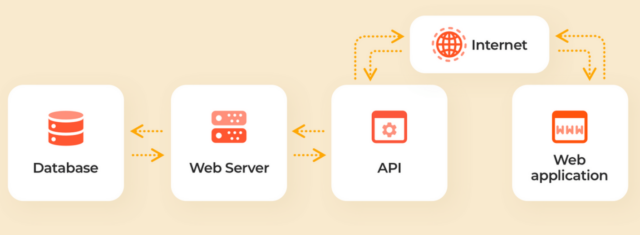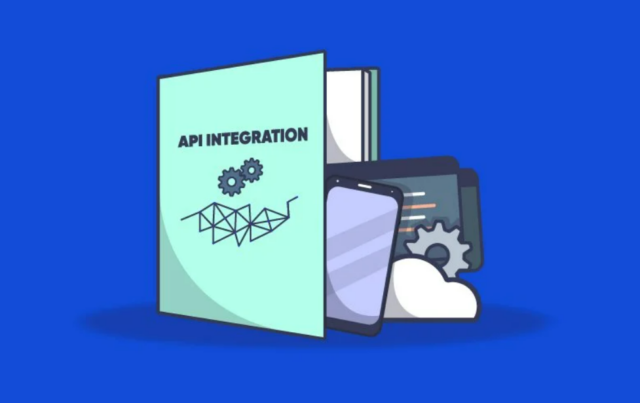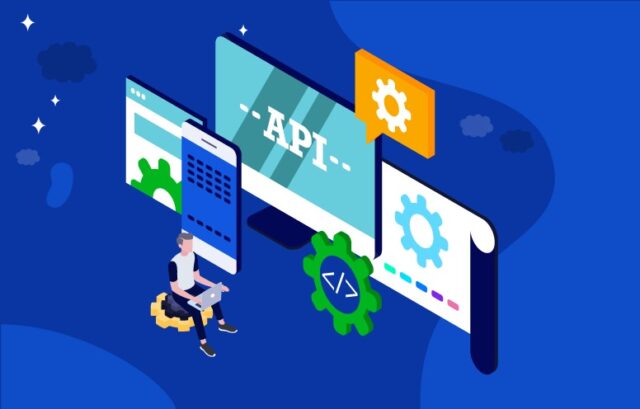
These days, you can’t build a website, run an online store, or use any high-quality business software without reading or hearing about API integrations.
Although they sound technically complex, API integrations aren’t that tech-heavy. In fact, they’re important parts of modern software that everyone should know about.
Not sure where to start? Read on for a detailed breakdown of API integrations, how they work, and why they are so necessary for modern business apps.
API Integration Explained

API integration means connecting or integrating application programming interfaces or APIs. In a nutshell, an API is a messenger protocol that processes requests from one or more applications, translates those requests, and ensures that multiple systems or apps can function together.
Put another way, APIs allow integration between apps, data, and different devices, even if they speak different programming languages or have different software functions.
API integration, therefore, is the act of integrating different apps’ application programming interfaces. No matter the size or the complexity of an application, it has an API so that other systems can exchange data with it.
Why Do We Need API Integrations?

API integration is so necessary because it allows apps to share data or communicate with each other without a software developer having to manually perform that translation.
For example, if you have a customer data platform or CDP and a marketing data platform, an API integration will allow both platforms to communicate and share data with each other seamlessly.
Thus, we need API integrations so our various software tools and apps work together and share data: an important part of modern marketing and business operations.
API integrations have become even more important in recent years thanks to cloud-based products and apps.
Since many businesses now use applications or software based on the cloud/cloud servers, API integrations are necessary so data from those servers seamlessly translates to company servers or software apps.
Bottom line: API integration makes enterprise-level data sharing and translating possible, plus enables software platforms to collaborate or communicate with one another.
API Integration Benefits

API integration is crucial for modern businesses thanks to its many benefits. These benefits include:
- Scalability and business growth. With APIs, you can scale up your business easily and rapidly since you don’t need to build your own software or data platforms from scratch. You can use your existing platforms and integrate with tools on the cloud or from other providers easily
- Automation. API integration means you don’t have to waste tons of time manually inserting or collecting data and information
- Fewer errors. Thanks to APIs, fast, safe, efficient, and accurate data may be transferred without many, if any, errors during the transfer process
- Fast communication. API integrations allow apps and software to transfer data or people to communicate with each other rapidly with a minimum of lag
Common API Integration Examples
There are lots of effective API integrations you probably benefit from every day without knowing it. Here are a few examples:
- Financial institutions such as banks and credit unions. Financial institutions use APIs in order to both send and receive financial data like credit card balances, transaction requests, etc.
- Weather reports. Your local weather platform receives climate and weather data using an API
- Social media platforms. APIs are frequently used on social media platforms to message accounts or to follow brands
- Streaming services. Netflix, Spotify, and other streaming services leverage APIs so they can effectively and seamlessly distribute their content to their consumers
- Travel booking and flight websites. The travel sector often uses API integrations to collect flight or hotel availability data, provide it to consumers, and send booking requests back to flight or hotel organizations, as just one example.
How Can You Perform an API Integration?

Generally, you can use one of three ways to perform an API integration.
First, you can custom-build an API integration using a handwritten script, either by hiring a software developer or relying on your in-house software developers.
However, this can be time-consuming, even though it results in custom functions and benefits for your enterprise.
You can alternatively use connector applications, which are affordable and very quick when deploying standard API solutions.
Or you can use dedicated API integration platforms, which are usually software as a service or SaaS apps.
These are dedicated to developing new API integrations, allowing programs and software apps to join with other applications and systems on the same cloud network.
Any of the above three ways can be appropriate depending on the API integration you need to achieve, your budget, and your timeframe.
As you can see, API integrations are cornerstone software elements that help modern software apps run as well as they do.
Without API integrations, modern business apps wouldn’t be able to integrate or work together nearly as well!







